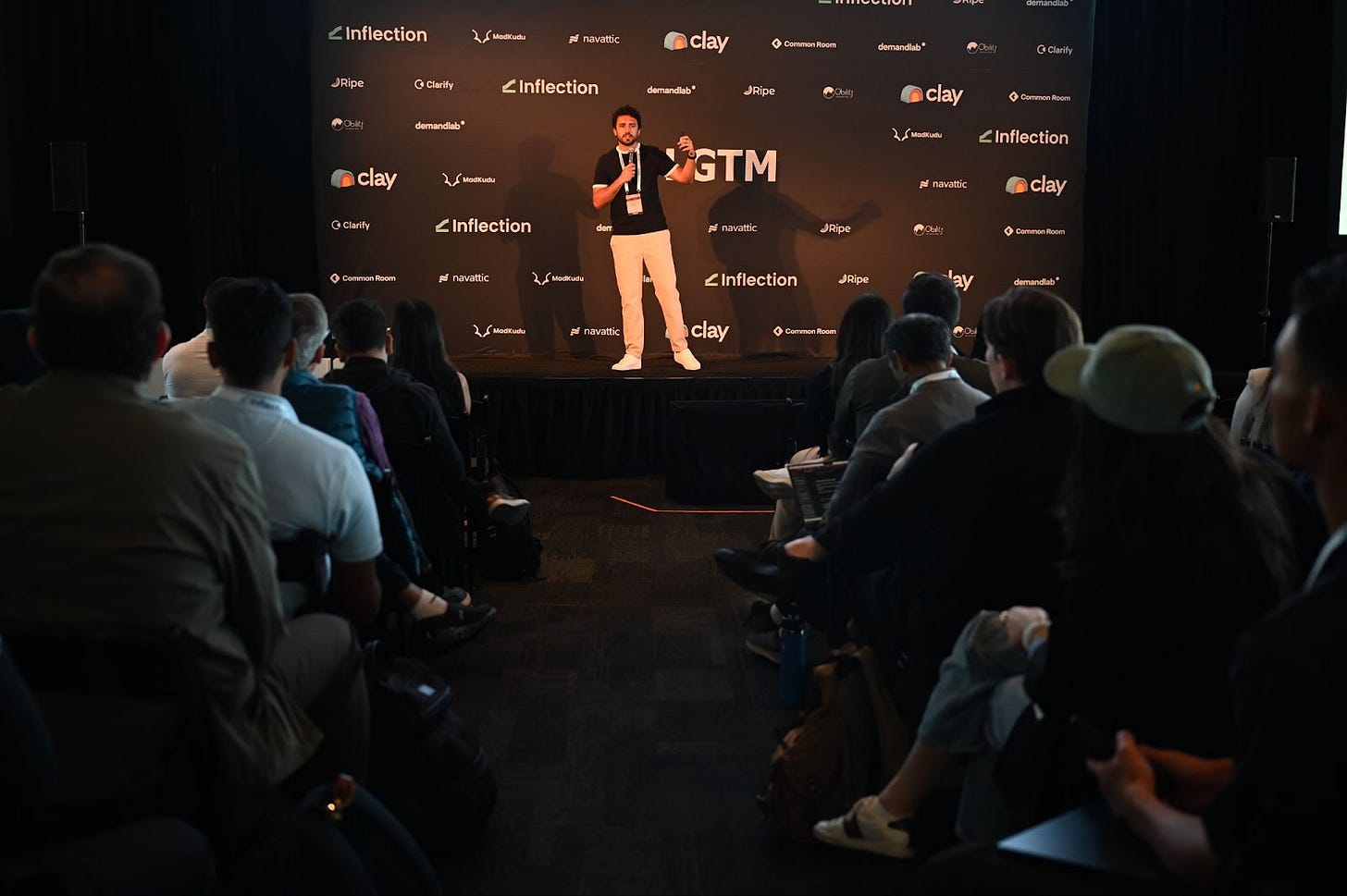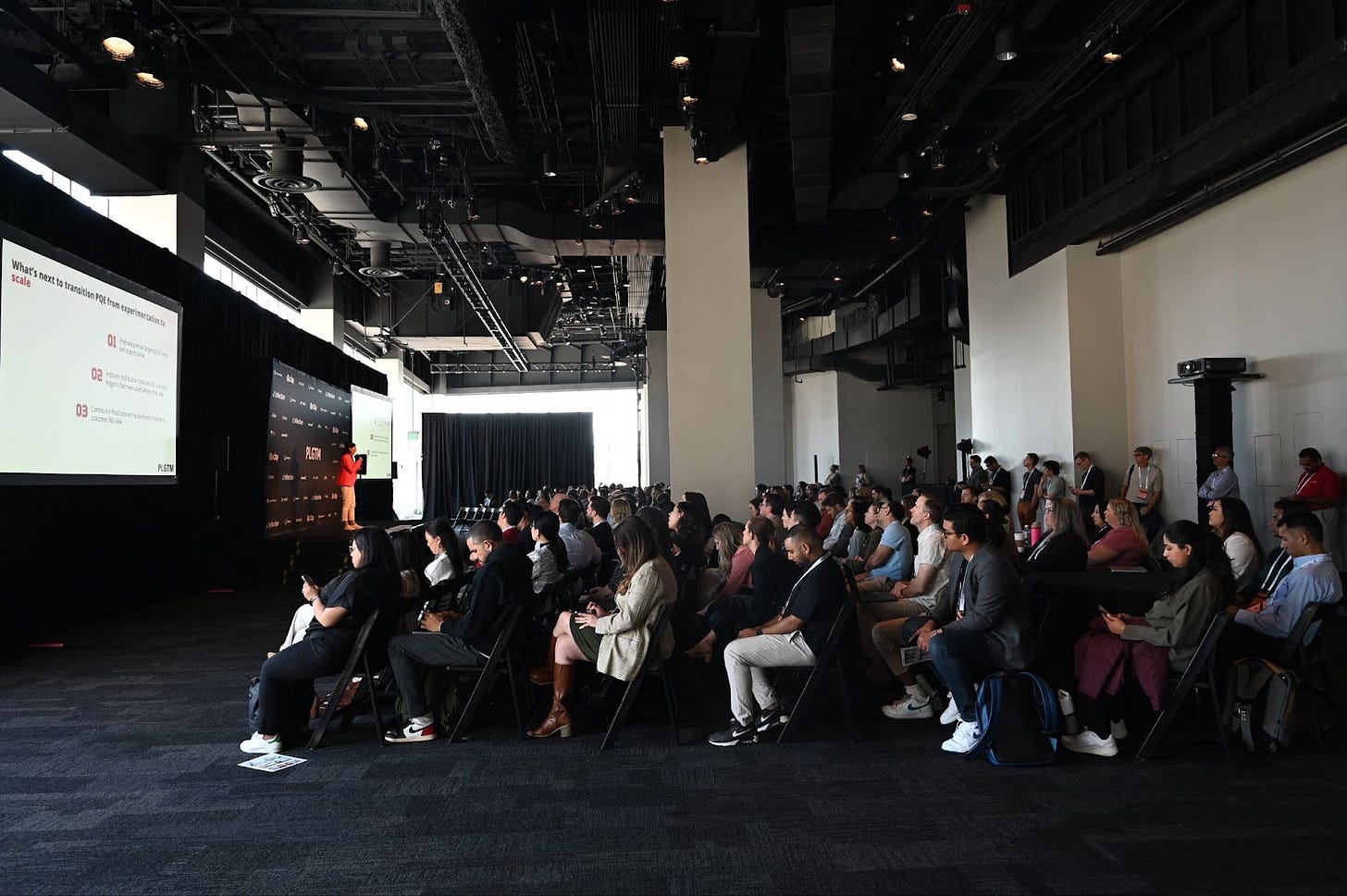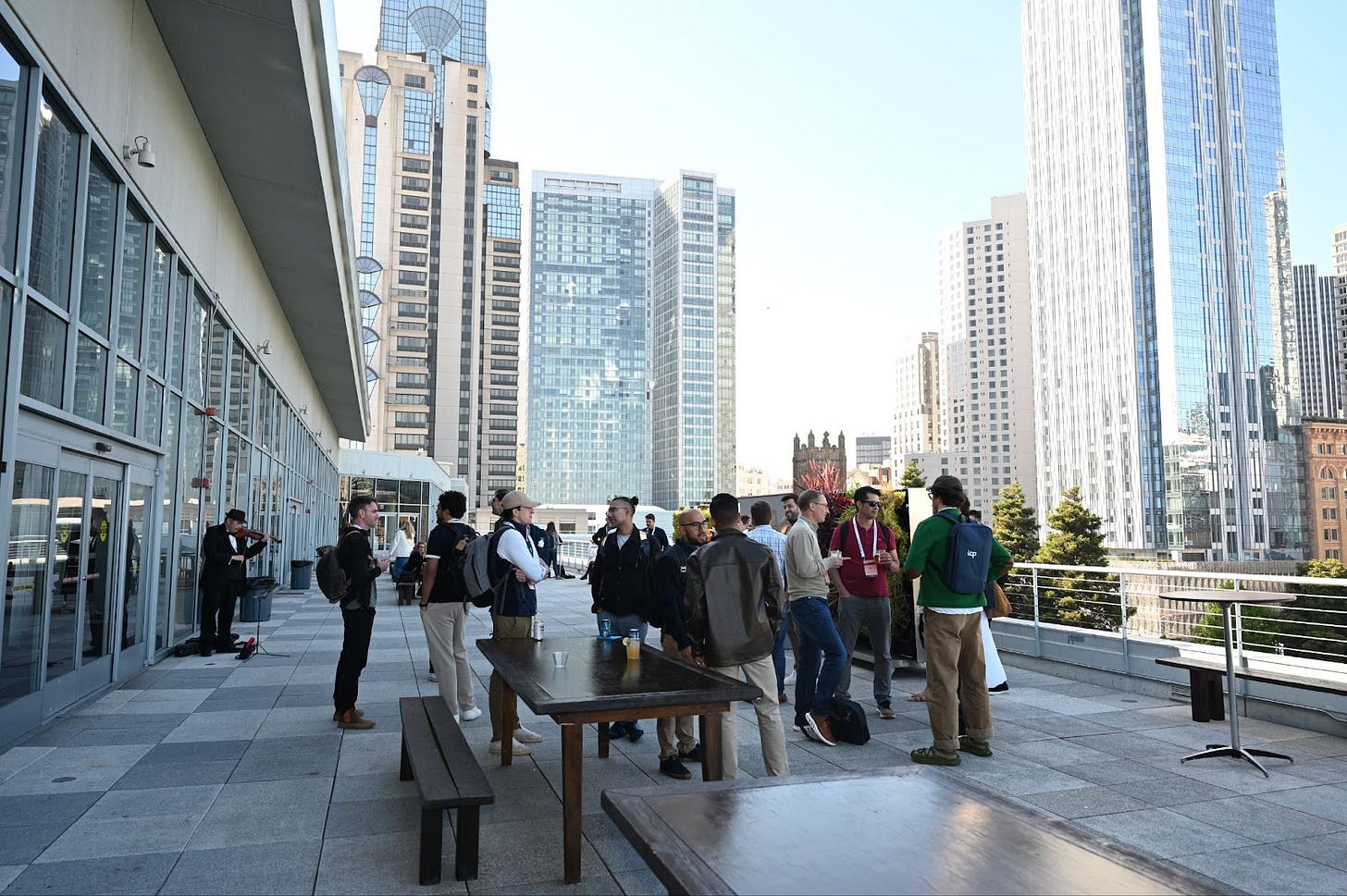PLGTM.com Takeaways: How Top PLG Teams Are Building Competitive Advantage
PLGTM.com x The Signal
If you were forwarded this newsletter, join 4,116 weekly readers—some of the smartest GTM founders and operators—by subscribing here:
Hey y’all! 👋
I was lucky enough to meet Dave Rigotti many years ago (he was the VP of Marketing at Bizible—marketing attribution, acquired by Marketo—and stayed on with Marketo, and then Adobe, for a couple of years before co-founding Inflection.io).
I have always enjoyed his perspective on the go-to-market space, and how he's building his current company. I have worked at a couple of large PLG companies (Zoom Video and Apollo) and I started a PLG/PLS company, Groundswell, to help other companies solve this challenge. So, I know the pain first-hand (and opportunity!) of operationalizing product usage data to make it actionable in downstream gtm systems. Using a data warehouse native marketing automation product is a no-brainer to me (which, is what Inflection does).
Anyway, I also think it's clever that he launched a conference called PLGTM.com, which is not directly associated with, or branded to, his company. Dave reached out to me to see if I’d like to speak at the conference, and I replied something like “public speaking is not my thing, but what if I attend and write a piece about what I learned at PLGTM.com conference?” And he said yes! Which is awesome.
So here we are. My first deep dive on The Signal, that is a roundup of an IRL event. By the way, I think there's a lot of interesting things with IRL. I talk about AI and automation a lot, but I think that human-to-human interactions and conversations have a certain magic to them that can't be replaced (see also: The Barbell Strategy of Pipe Gen in 2025).
The conference was around 500 operators at PLG companies (primarily, marketers, but there were also many ops folks and some sales/revenue folks).
In this post, I highlight the top three lessons I learned from a few of the talks. And then a round-up of other things I took away (from talks and conversations with people in attendance).
Thanks again to Dave, Aaron Bird (also a legend), and the team at Inflection for the awesome event, and for having me come hang out and learn with y’all. It was truly a high-quality event filled with top-tier operators.
All right, let's get into it.
Lesson #1: Finding Your Unique GTM Differentiator
The first lesson that stood out was from Bruno Estrella, Head of Marketing Clay. This guy is a ninja. He was at Webflow for five years before this and then at BAMF (this was the OG growth hacker community) among other Growth Marketing roles.
I've spent a lot of time building in Clay for clients over the last year or so, and I have studied their go-to-market motion very closely. I even wrote a piece (not sponsored) about Clay’s Moat being their network of people (agency owners) who brag about Clay workflows online, because it benefits their agencies (which leverage/implement Clay for companies). So it was really interesting to see Bruno talking about this firsthand, sharing their intentional strategy around a concept that has stuck with me: finding your unique GTM differentiator.
In other words, what is the unique thing that you can offer in the marketplace from a go-to-market perspective that other companies cannot? For Clay specifically, this is the flywheel of having agencies (aka Claygencies) spread the word about Clay publicly because it helps their business. But obviously, it also points back to Clay's product. When this started happening organically for Clay, they quickly noticed it and quickly took action to kind of throw fuel on this already lit fire. Then, because Clay is PLG, people see the content, sign up and try it out themselves, hit an AHA moment, and then become regular users and start paying. Once Clay saw this happening organically, they threw fuel on the fire, but intentionally activating their community members, making them feel lived — to steal from Bruno’s presentation: “In a world where you can automate everything, there is one area we intentionally do not automate – surprising members of our ecosystem with thoughtful experiences.”
The best GTM teams are building leverage around their company’s unique GTM differentiator. In a world with more competitors and noise than ever before, finding this alpha will set you apart in the market.
Lesson #2: The PLG Journey Spans the Entire Customer Lifecycle
Today, 77% of research is done before talking with a salesperson. And, I’m confident this trend only continues. Buyers are buying (and trying products) with less and less human intervention. Everything from becoming problem-aware (marketing team) to product-aware (product team) to a sales conversation (sales team), into a paying customer (csm team), expanding/buying more products and renewing (am team). A buyer needs to be met where they’re at, systemically, along that buyer journey. Across internal teams.
Building this “user journey” is complex and messy, but incredibly valuable if you nail it. I felt this pain when I was at Apollo helping do a lot of the automated warm outbound, PLG/PLS workflows - like reaching out to folks who signed up (plus their colleagues), and also launching expansion workflows into cohorts of paying customers who were not using certain products yet. It was 100% automated.
Companies like Common Room and MadKudu (both sponsors of PLGTM.com) are other great products to check out to help solve this challenge.
With a PLG product, there is not a single user journey — there are essentially unlimited paths a user/company can take. Meeting them where they’re at along that journey is critical. And you need technology (and AI agents) to scale these nuanced journeys with product usage data. This is no longer a nice-to-have, but a need-to-have.
Lesson #3: AI is Not Coming, It's Already Here
It was interesting to me how much people were talking about AI, but how few people were sharing actual agentic workflows that were being used, at scale, in production. To me, I think we are overestimating what is going to happen in the next year and underestimating what is going to happen in the next decade. I strongly believe AI is going to fundamentally change go-to-market. The tools, the products, and how we staff a go-to-market team. It's going to touch everything: AI is most like electricity.
People are craving for real use cases of deploying AI. Everyone has tinkered with these things, most people stop at a certain point because they realize that to get to 80% is really easy, but to get the final 20% is actually 80% (or more) of the work.
Which is why I found one of the most compelling talks from Vanessa Thompson, VP, Revenue & Growth Marketing at Twilio, who shared how they've built an inbound AI SDR internally. It works 24/7, speaks 12 languages, handles 90% of inbounds, and if a prospect interacts with ISA (the inbound AI’s name) they are 3X more likely to convert from a free to paid Twilio plan. And, it’s infinitely scalable. That’s incredible.
One thing I love (given I “grew up” in Sales) is that it was designed by Sales, for Sales. I think people don’t leverage sellers as much as they should as they build out their GTM motions strategy.
Twilio is now starting to build an outbound AI SDR, and these agents will talk to each other and pass off knowledge one to the next.
Tying this back to lessons #1, Twilio has a very unique ability to build AI agents in-house — because they own Segment, they have a really good data stack and data team and resources to do this internally.
They also have something called PQE, which is Product Qualified Engine, which delivers a “Feature Mart,” Propensity Models, and a Decisioning Engine. And it works! 40% of closed-won pipeline in Q1 came from PQE-generated plays.
Bonus: 10 bite-sized lessons
PLG and signals continue to enable GTM teams to do less with less, especially when coupled with AI. Use PLG or “PLG tactics” (eg: interactive demos, product experiences enabled by AI, etc.) -David Yockelson (VP Analyst, Gartner)
You should design your GTM systems for exploration, not just execution. -Vanessa Meyer (Founder, Growth Wise)
Product and Marketing are converging — and that’s a good thing! They work faster, together. Lean into this new reality. -Tanya Littlefield (VP of Growth & Digital Marketing, Amplitude)
Don’t be afraid to blur the lines between PLG and SLG. We’re living in a world where the buyer journey is nuanced—we need GTM motions that are nuanced too. -Sydney Sundell (Growth + Monetization Product Marketing, Checkr)
AI-led PLG transforms product from a static experience into a smart, adaptive system that learns from every user and grows itself. This unlocks precision targeting — 1) Microsegments (AI creates segments by intent, stage, ICP fit), 2) Dynamic Personas (NLP from support/chat/product usage) and 3) Real-time Behavior (LLM-powered behavioral segmentation). -Sonal Mane (Global Growth Strategy & GTM Leader, Databricks)
Engineers are the hardest personas to sell to. They’re going to do more discovery on their own, and you should only reach out proactively when you can genuinely offer value (by monitoring specific signals — what they’re doing in your product, github, community engagement, etc.). -Soham Maniar (Director of Revenue Operations, Weaviate)
Your customers’ first impression shapes their long-term success. Ensure you’re removing any/all friction to ensure your users onboard successfully. -Ramli John (Author of Product-Led Onboarding)
Traditional Automation Breaks in a PLG Motion. The data architecture does not support the last generation of software. (This is why companies like Inflection exist). So we have to rethink our tooling for the modern era. Start with data architecture, not assets. Involve product and engineering early and launch iteratively. -Kristen Malkovich (Director GTM Technology, BILL)
NRR > ARR. Increase NRR by doing these things: community, education, usage, feedback, reminders, celebrations, advocacy, and gifting. (Yes, it’s a lot of hard work, but that’s where the alpha lies in today’s market) -Kris Rudeegraap (Co-CEO/Co-Founder, Sendoso)
Get sellers feedback as you’re building out your GTM motions. And leverage product data as your rocket fuel to help scale them. -Katie Peters (Senior Director, Marketing Operations, Sauce Labs)
Final Thoughts
This event was niche enough that we all had similar challenges that we’re trying to solve. But big enough that I could bump into a ton of different people who were working at lots of great PLG companies.
I loved that it was almost exclusively operators who were speaking at the event, giving tactical talks.
And the sponsors are all really interesting companies (many of which I’ve written about on The Signal) — companies like Clay, Common Room, Madkudu, Clarify, and Navattic.
Thanks again to Dave for having me and for allowing me to write this piece.
PS: He didn't ask me to do this, but I encourage anyone who is a PLG company to check out Inflection - the data warehouse native marketing automation platform. The team is world-class, and they're working with incredible companies like Clay, Bill.com, Vercel etc. and I believe that they will continue to be the category leader in the space.
I hope to see you all at PLGTM.com next year!
As always, thank you for your attention and trust.
See you next time,
Brendan 🫡
PS - If you enjoy reading this hand-rolled, 100% organic, human-written newsletter that explores the future go-to-market playbook, I’d be grateful if you forward it to a friend or two.






